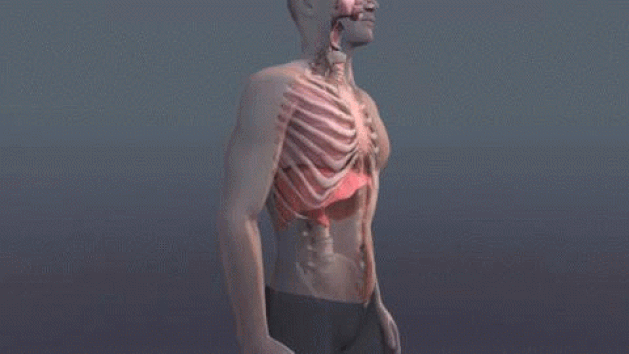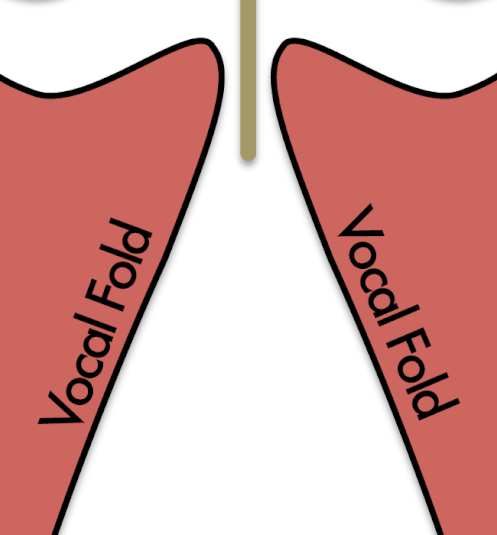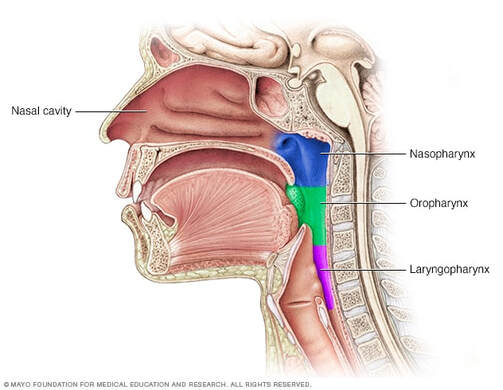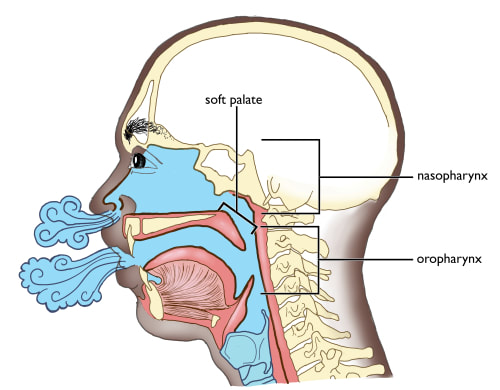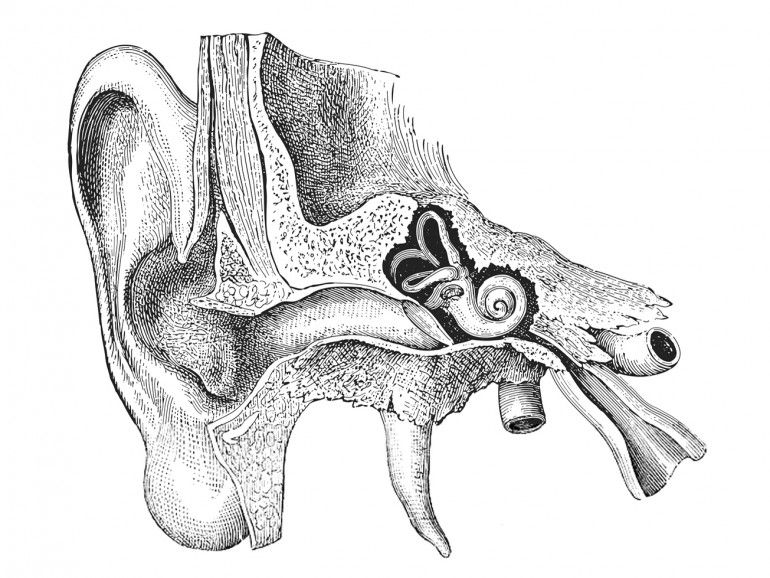COMPONENTS
- Power Source
- Oscillator
- Resonator
- Transmitter
- Receiver
POWER SOURCE
AIR PRESSURE: Breath
Breath Support: Managing Air Pressure
When singing, we want to extend the engagement of the muscles of inspiration (the diaphragm and intercostal muscles) to control the amount, pressure, and rate of air being expelled from the lungs. This means we keep our inhalation muscles in use while we exhale (sing).
Diaphragm
When singing, we want to extend the engagement of the muscles of inspiration (the diaphragm and intercostal muscles) to control the amount, pressure, and rate of air being expelled from the lungs. This means we keep our inhalation muscles in use while we exhale (sing).
Diaphragm
- Our "Breathing Pump" - contracts downward to pull air into the lungs. We can only control it's downward contraction.
- Help to keep the ribcage (and therefore our lungs) expanded.
- Helps to create stability or a fulcrum for our inspiration muscles to lean against.
OSCILLATOR
Vocal Folds a.k.a Vocal Cords
|
Pitch Production: Vibratory Cycles Per Second
Air moving past our vocal cords gets them vibrating. That vibration creates a tone. Depending on how fast or slow (how many oscillations per second) they vibrate, we get a higher or lower tone. When our vocal cords are stretched longer, they vibrate faster, when they are relaxed and shorter, they vibrate slower. (i.e.) 440 cycles per sec = 440hz = A4 Vocal Registers: "Chest Voice" & "Head Voice"
|
RESONATOR
Vocal Tract: Pharynx (Laryngo-, Oro-, Naso-)
|
Amplifier & Individuality
Without our vocal tract resonator, our voice would sound like a reedy buzz and we wouldn't be able to form vowels, express any kind of nuance, or project our voice.
|
Resonance Adjusters = Sound Sculptors
|
TRANSMITTER
Any Medium: Gas, Liquid, Solid
- Gas = Air!
- Liquid: Water (whale song...)
- Solid: Sound moves fastest in dense "elastic" solids.
